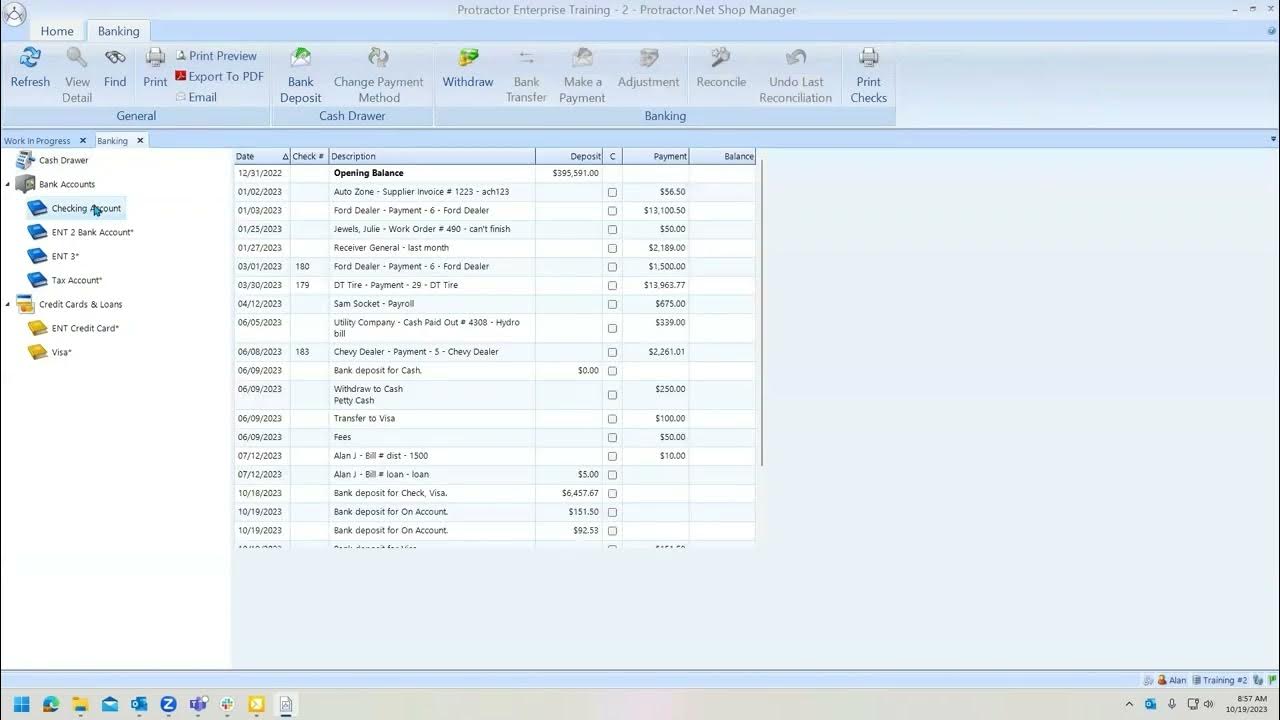Positive Negative Confirmation
Summary
TLDRAccounts receivable confirmations are a common audit procedure to verify revenue, involving sending letters to clients' customers to confirm account details. The script discusses the challenges of obtaining responses from large vendors like Walmart and Target, and the importance of positive vs. negative confirmations. It also highlights the need for original mailed confirmations, not oral or electronic, and the potential issues with relying on client-provided addresses. The summary emphasizes the upcoming new standards and the critical role of confirmations in detecting fraud and verifying the existence and evaluation of accounts.
Takeaways
- 📜 **Accounts Receivable Confirmations**: A common revenue test in audits, involving sending letters to clients' customers to verify account information.
- 🔍 **Three Types of Confirmations**: The audit usually focuses on the first two types, with the third type, 'blank confirmations', being less common due to low response rates.
- 🛒 **Large Vendors' Refusal**: Many large vendors, like Walmart and Target, refuse to fill out vendor confirmations, making the audit process challenging.
- 📈 **Positive vs. Negative Confirmations**: Positive confirmations require customers to affirm information, providing stronger evidence but needing more work, while negative confirmations only require a response if there's an issue.
- 📝 **Original Copy Requirement**: Confirmations must be received in their original mailed form, not via fact, oral confirmation, or email.
- 📆 **Timing of Confirmations**: They can be sent at any time, but sending them closer to the year-end provides more persuasive evidence.
- 🚫 **Client Interference Prohibited**: The auditor must mail the confirmations directly; clients cannot rely on their own mail system to avoid potential fraud.
- 🔎 **Investigating Exceptions**: Any noted exceptions by clients must be investigated, not just accepted at face value.
- 🏢 **Verification of Existence**: Confirmations are primarily used to verify the existence of accounts, and sometimes interns use tools like Google Maps for visual verification.
- 📚 **Upcoming Standards**: New standards are expected to provide clarity on the process, which is currently confusing.
Q & A
What is an accounts receivable confirmation?
-An accounts receivable confirmation is a revenue test in auditing where a letter is sent directly to a client's customers to verify certain information about their accounts.
What are the three types of confirmations mentioned in the script?
-The script mentions three types of confirmations: positive confirmations, negative confirmations, and blank confirmations. Blank confirmations are less commonly used due to their low response rate.
Why are large vendors like Walmart and Target refusing to fill out vendor confirmations?
-Large vendors are refusing to fill out vendor confirmations because it is not a profit-generating activity for them.
What is the difference between positive and negative confirmations?
-Positive confirmations require the recipient to affirm the information provided until they respond truthfully, while negative confirmations only require a response if there is a problem, assuming no response means agreement.
Why is positive confirmation considered to provide stronger evidence?
-Positive confirmation provides stronger evidence because it requires direct affirmation of the information by the recipient, whereas negative confirmation relies on the absence of a response to imply agreement.
What are the specific rules governing the collection of confirmations?
-The specific rules include not accepting oral confirmations or electronic communications like emails. The original copy must be mailed and received.
Why did the intern's mistake of mailing confirmations to the wrong addresses not result in any complaints?
-The intern's mistake did not result in complaints because even with negative confirmations and incorrect information, no one responded, which historically has led to problems in the quality of evidence obtained.
When should accounts receivable confirmations be sent for maximum persuasive evidence?
-Confirmations should be sent closer to the year-end for more persuasive evidence, as is the case with all audit tests.
Why is it important that the auditor mails the confirmations directly?
-It is important that the auditor mails the confirmations directly to ensure that the client cannot tamper with them, which could undermine the quality of the evidence if the client is engaging in fraud.
What is the primary purpose of accounts receivable confirmations?
-The primary purpose of accounts receivable confirmations is to verify the existence of the accounts and to ensure the accuracy of the information provided by the client.
How can the existence of a location be verified in the context of confirmations?
-The existence of a location can be verified by interns looking at Google Maps and obtaining visual confirmations of the places, ensuring that the mailing addresses are valid.
Outlines

Esta sección está disponible solo para usuarios con suscripción. Por favor, mejora tu plan para acceder a esta parte.
Mejorar ahoraMindmap

Esta sección está disponible solo para usuarios con suscripción. Por favor, mejora tu plan para acceder a esta parte.
Mejorar ahoraKeywords

Esta sección está disponible solo para usuarios con suscripción. Por favor, mejora tu plan para acceder a esta parte.
Mejorar ahoraHighlights

Esta sección está disponible solo para usuarios con suscripción. Por favor, mejora tu plan para acceder a esta parte.
Mejorar ahoraTranscripts

Esta sección está disponible solo para usuarios con suscripción. Por favor, mejora tu plan para acceder a esta parte.
Mejorar ahoraVer Más Videos Relacionados
5.0 / 5 (0 votes)






